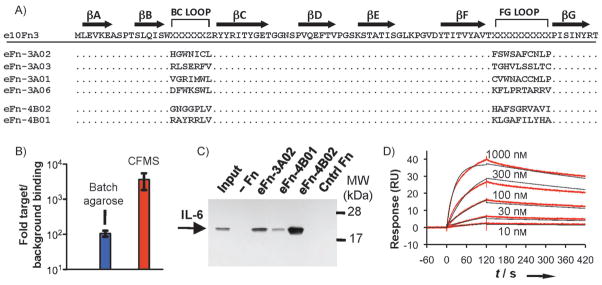Figure 2.

Characterization of selected IL-6-binding sequences. A) The sequence of the e10Fn3 library (x =random, z =L, I, or V). After three rounds, pool 3A converged to clone eFn-3A02, which represented 70% of selected clones. Selection B was performed to avoid cysteine-containing clones, and converged after four rounds to eFn-4B02 (16 out of 20 clones) and eFn-4B01 (3 out of 20 clones). B) Quantitative PCR-based binding assay to demonstrate increased selectivity of CFMS for pool 4B, which bound to IL-6 target beads more than 3000-fold more efficiently than a non-enriched pool (background binding); the selectivity of pool 4B using cross-linked agarose beads was approximately 100-fold. C) Pull-down results of IL-6 using immobilized e10Fn3 samples, as visualized by western blot (input =5% of total). D) SPR measurements to determine affinity of eFn-4B02 for IL-6 (koff = 8.8 × 10−4 s−1; kon = 4.2 × 104 M−1 s−1; KD = 21 nM).
